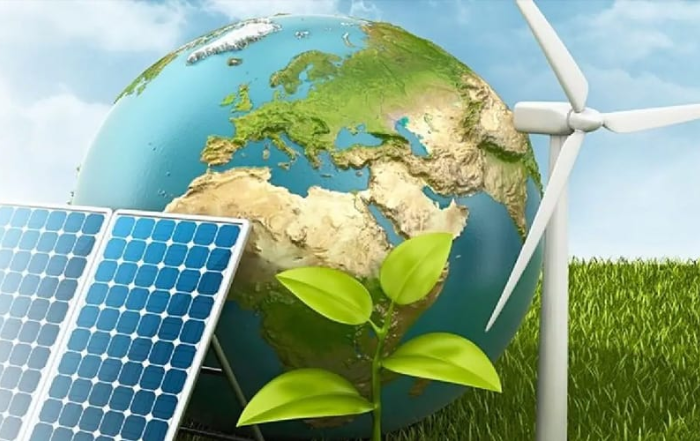Technology Contribute to Renewable Energy Solutions

Technology plays a crucial role in advancing renewable energy solutions, driving innovation, efficiency, and scalability in the transition towards a sustainable energy future. Here are several ways in which technology contributes to renewable energy:
-
Solar Photovoltaics (PV):
- Advanced Solar Panels: Technological advancements in solar panel design, materials, and manufacturing processes have led to higher efficiency, lower costs, and increased durability of solar PV systems.
- Thin-Film and Perovskite Solar Cells: Emerging solar cell technologies, such as thin-film and perovskite solar cells, offer potential for further efficiency improvements and reduced material usage compared to traditional silicon-based solar cells.
- Solar Tracking Systems: Solar tracking systems use sensors and actuators to orient solar panels towards the sun, maximizing sunlight exposure and energy generation throughout the day.
-
Wind Power:
- Turbine Design and Efficiency: Advances in wind turbine design, blade aerodynamics, and materials science have increased the efficiency and power output of wind turbines, lowering the cost of wind energy production.
- Offshore Wind Farms: Technology enables the development of offshore wind farms in deeper waters, where wind resources are abundant and less disruptive to land use, expanding the potential for offshore wind energy generation.
- Predictive Maintenance: IoT sensors and data analytics enable predictive maintenance of wind turbines, detecting potential failures early and optimizing performance to maximize uptime and reliability.
-
Hydropower:
- Turbine Optimization: Advanced turbine designs and optimization techniques improve the efficiency and environmental compatibility of hydropower systems, minimizing ecological impacts on rivers and aquatic ecosystems.
- Pumped Hydro Storage: Pumped hydro storage systems use surplus renewable energy to pump water uphill to reservoirs during off-peak periods, storing energy for later use and providing grid stability and energy storage capacity.
-
Biomass Energy:
- Advanced Conversion Technologies: Technology innovations in biomass conversion processes, such as gasification, pyrolysis, and anaerobic digestion, improve the efficiency and environmental performance of biomass energy production, enabling the utilization of various feedstocks and waste materials for energy generation.
- Biofuel Production: Biotechnology and genetic engineering techniques enable the production of advanced biofuels from non-food feedstocks, such as algae and cellulosic biomass, offering renewable alternatives to conventional fossil fuels in transportation and industry.
-
Geothermal Energy:
- Enhanced Geothermal Systems (EGS): EGS technologies leverage advanced drilling techniques and reservoir engineering to access deeper geothermal resources and enhance heat extraction from underground reservoirs, expanding the potential for geothermal energy production in regions with limited geothermal resources.
- Geothermal Heat Pumps: Geothermal heat pump systems use heat exchange technology to extract heat from the ground for space heating, cooling, and hot water production, offering energy-efficient and environmentally friendly heating and cooling solutions for buildings.
-
Energy Storage:
- Battery Technologies: Advancements in battery technologies, such as lithium-ion batteries, flow batteries, and solid-state batteries, enable energy storage solutions for intermittent renewable energy sources, such as solar and wind power, improving grid stability and enabling greater integration of renewables into the energy mix.
- Grid-Scale Storage Systems: Grid-scale energy storage systems, such as pumped hydro storage, compressed air energy storage, and thermal energy storage, provide long-duration storage capabilities to balance supply and demand, manage grid fluctuations, and support renewable energy integration at scale.
Overall, technology plays a pivotal role in driving the adoption, efficiency, and affordability of renewable energy solutions, accelerating the transition towards a more sustainable and resilient energy system. Continued research, innovation, and investment in renewable energy technologies are essential for achieving global climate and energy goals while ensuring energy security and economic prosperity.
Thank you,